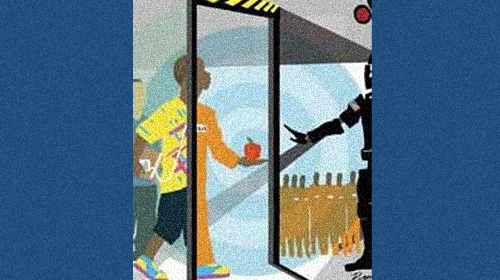
I, like most Americans, watched in horror as the tragedy at Sandy Hook Elementary School unfurled last December. As a former elementary school teacher, I could not stop seeing my former students as possible victims, and I was angry, confused, and eager for change to prevent another incident like this one.
Since the shooting, there’s been a lot of discussion about how to keep kids safe and how to prevent more violence. The tragedy in Newtown has sparked a national conversation about guns, mental illness, violence in the media and school safety, and over the past several weeks, there have been a number of Congressional hearings on these issues. In fact, the Senate Judiciary Committee will hold a hearing Wednesday on a proposed assault weapons ban and the House Education and Workforce Committee will meet later this week for a hearing on school safety. Restricting access to certain types of firearms is one thing. But while some well-meaning policymakers might assume that putting more police in schools will make students safer, experience demonstrates otherwise. Censoring violent media or stigmatizing those with a mental illness as unusually violent won’t fix the problem either.
Research shows that those living with a mental illness are far more likely to be the victims of violent attacks than to be the perpetrators. Stigmatizing the mentally ill as violent infringes on their freedoms while doing nothing to improve safety, but it may deter those who need help from seeking it. As a nation, we have advanced too far in our understanding and treatment of the mentally ill to succumb to panic and misinformation. Now is the time to instead open a dialogue between the government and the public at large about the accessibility and benefits of psychological treatment.
Censoring violence in the media also isn’t the answer. Study after study–not to mention the Supreme Court–has found nothing in violent material to override the freedoms of the First Amendment. Congress should not place themselves in the shoes of parents by deciding what children can see, read, play or hear. In times of national tragedy or fear, our nation often finds itself headed down the road towards censorship, but our focus should be on what we know to be impactful and what we know to be harmful.
Putting police in our schools is another solution that’s been proposed, but the unforeseen consequence of introducing a significant police presence in schools is that it transforms them into the very places education is meant to keep children away from–prison–and provides a more direct avenue to it. Most school police spend a significant portion of their time responding to minor, non-violent infractions like truancy rather than on issues that seriously threaten the safety and security of students. Criminalizing minor misbehavior that should be handled by a teacher, school administrator or parent has serious consequences for kids and contributes to the school-to-prison pipeline – policies that push kids out of the classroom and into jail cells.
This is not the first time this nation has reacted to violence with proposals for increased law enforcement in schools. After the Columbine High School massacre in 1999, Denver increased funding for police in schools, and as a result, the city saw during the first five years the number of students referred to the justice system increase by 71% and the number of suspensions and expulsion increase by nearly half, with no reduction in incidents at schools. After almost a decade of seeing little benefit, high costs and negative consequences of police in schools, Denver is transitioning to proactive approaches that keep schools safe.
I know we can’t lose sight of providing all students a quality education in a safe environment. Looking to the future, we need to find a balanced approach that establishes a safe and academically focused environment without further spreading the negative consequences of past policies.
The safety of our country’s children should remain a topic for discussion, and action must be taken to limit the violence that is ravaging our schools, streets and homes. Yet, as our past has shown, restrictive and reactionary measures only serve as temporary pain relievers with little effect on the actual problems.
As Congress continues to fight for an end to this violence, it is important not to lose sight of what works and what doesn’t.
Learn more about school-to-prison-pipeline and other civil liberty issues: Sign up for breaking news alerts, follow us on Twitter, and like us on Facebook.


